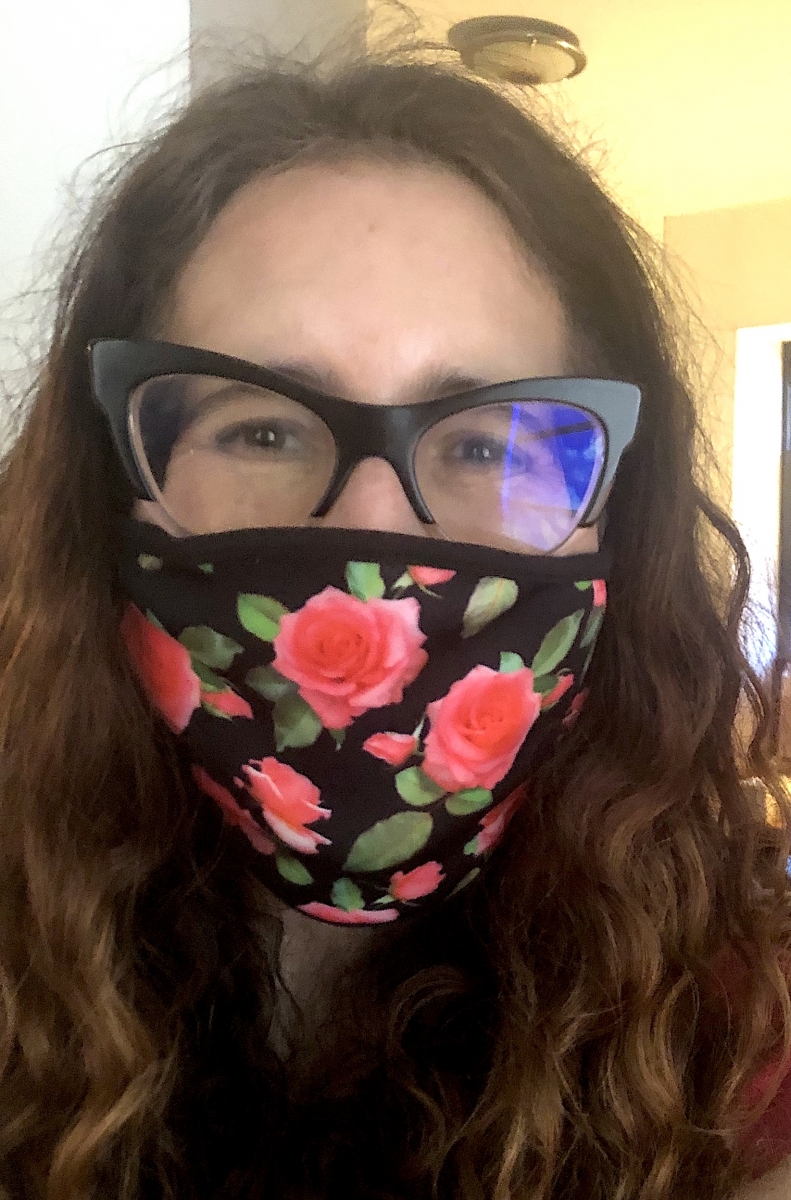 I bought two beautiful masks from a company called MasQd that finally arrived a month after I ordered them. The problem? I find wearing a thick mask that covers much of my face unbearable in warm weather. So, despite the great protection and style of my new mask, I returned to wearing the much more comfortable—and probably not as foolproof—leopard-print scarf left to me by my mother. I plan to keep the proper mask in my purse for when I enter enclosed public spaces or ride on mass transit—and for when I return to the office, whenever that may be.
I bought two beautiful masks from a company called MasQd that finally arrived a month after I ordered them. The problem? I find wearing a thick mask that covers much of my face unbearable in warm weather. So, despite the great protection and style of my new mask, I returned to wearing the much more comfortable—and probably not as foolproof—leopard-print scarf left to me by my mother. I plan to keep the proper mask in my purse for when I enter enclosed public spaces or ride on mass transit—and for when I return to the office, whenever that may be.
My company sent a video and accompanying PDF with instructions for “self-screening” and instructions for our new office life. It says that we are to wear face covering when “entering and leaving” the office. So does that mean we are exempt from wearing the masks when sitting at our desks? Fortunately, our office is highly air-conditioned, so the feeling of having my face smothered and wilting under the mask shouldn’t be a problem. However, I still wonder how tolerable I will find keeping my face under wraps for nine hours a day. The PDF guide also came with a list of symptoms to screen ourselves for every day before leaving our homes. Some are definitely markers of sickness, such as fever, but others are common occurrences for many of us, such as headaches. With such an exhaustive list of symptoms, I thought to myself, a person would be liable to think they had COVID-19 at least a few times a week.
As businesses create such guides for employees, I became curious what experts in workplace safety were recommending. I found this guide for reopening offices by VitalSmarts’ Joseph Grenny, published by Harvard Business Review. “As businesses begin to reopen, great attention is being given to the measures required to keep employees and customers safe. And many of those measures are simple behaviors: washing hands, wearing masks, etc. But those measures won’t succeed unless they become norms. And at the end of the day, the speed with which norms change is the speed with which it becomes normal to give correction. If noncompliance is rarely addressed, healthy behavior becomes a joke,” Grenny writes.
What that made me think of was whether the discomfort of long hours of mask wearing and controlled social distancing will be tolerable for the majority of people. Some, like my sister and brother-in-law, were germaphobes even in pre-pandemic times (i.e., my brother-in-law tried to put Purell up his nose in a Paris café after a stranger nearby coughed). Those people likely will fall into line with a smile on their faces. People like me, though, will have difficulty and may become irritable.
The question is how to create a system that is workable so the most important safety measures are taken while those that are not as important are pushed to the side. The way the UK government has approached mask-wearing guidelines is a great example of taking precautions while creating livable solutions. While in parts of the U.S., like New York City, where I live, people are advised to wear masks all the time they are away from their homes—including outside on walks by themselves—England has taken a different approach, requiring the masks only in certain enclosed public spaces and on mass transit. The government goes so far as to let people know when they don’t have to wear masks, including: “outdoors or while exercising, in schools, in workplaces such as offices and shops, children under two or primary aged children who cannot use them without assistance, and people who have problems breathing while wearing a face covering.”
Companies can take a similar approach when considering which safety measures, like mask-wearing, are important in their office. For example, employees can be required to wear masks in meetings and when passing through heavily trafficked areas of the office, like the employee lounge area, but can be told they do not need to wear masks when sitting at their desks or when doing short runs to the copy machine or the bathroom.
When it comes to social distancing, instead of leaving markers all over the office to control where people stand in common areas, consider simply removing chairs in meeting areas. People then will take a cue as to how many should gather together at one time. You also can enforce social distancing in areas where it truly can make a difference, such as on elevators. Take a look at your building’s elevators and post a sign on how many you think should be on the elevator at one time. It also makes sense to require masks on an elevator.
As companies welcome employees back to the in-person workplace, safety is important, but the measures you take will be counterproductive if they are so cumbersome and unpleasant that people disregard them entirely.
What safety guidelines and protocols has your company implemented? How are you balancing comfort and practicality with safety as employees begin returning to the office?

